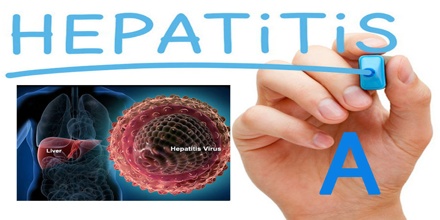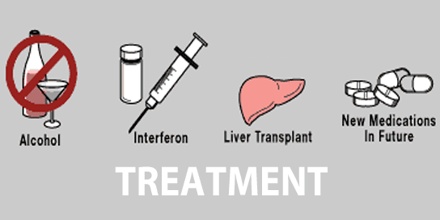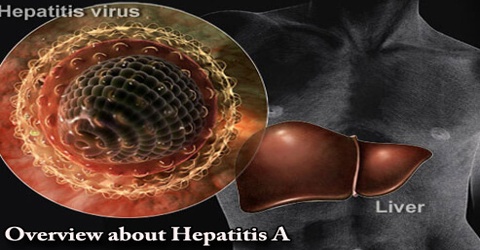Overview about Hepatitis A
Hepatitis A is a liver disease caused by the hepatitis A virus. The virus is primarily spread when an uninfected (and unvaccinated) person ingests food or water that is contaminated with the faeces of an infected person. The disease is closely associated with unsafe water or food, inadequate sanitation and poor personal hygiene.
Hepatitis A occurs sporadically and in epidemics worldwide, with a tendency for cyclic recurrences. The hepatitis A virus is one of the most frequent causes of foodborne infection. Epidemics related to contaminated food or water can erupt explosively, such as the epidemic in Shanghai in 1988 that affected about 300 000 people1. Hepatitis A viruses persist in the environment and can withstand food-production processes routinely used to inactivate and/or control bacterial pathogens.

The hepatitis A vaccine is effective for prevention. Some countries recommend it routinely for children and those at higher risk who have not previously been vaccinated. It appears to be effective for life. Other preventive measures include hand washing and properly cooking food. No specific treatment is available, with rest and medications for nausea or diarrhea recommended on an as-needed basis. Infections usually resolve completely and without ongoing liver disease. Treatment of acute liver failure, if it occurs, is with liver transplantation
Causes of Hepatitis A
The hepatitis A virus, which causes the infection, usually is spread when a person ingests even tiny amounts of contaminated fecal matter. The hepatitis A virus infects liver cells and causes inflammation. The inflammation can impair liver function and cause other signs and symptoms of hepatitis A.

Hepatitis A virus can be transmitted several ways, such as:
- Eating food handled by someone with the virus who doesn’t thoroughly wash his or her hands after using the toilet
- Drinking contaminated water
- Eating raw shellfish from water polluted with sewage
- Being in close contact with a person who’s infected — even if that person has no signs or symptoms
- Having sex with someone who has the virus
In developing countries with poor sanitary conditions and hygienic practices, most children (90%) have been infected with the hepatitis A virus before the age of 10 years 2. Those infected in childhood do not experience any noticeable symptoms. Epidemics are uncommon because older children and adults are generally immune. Symptomatic disease rates in these areas are low and outbreaks are rare.
Signs and Symptoms of Hepatitis A
Symptoms of hepatitis A range from mild to severe, and can include fever, malaise, loss of appetite, diarrhoea, nausea, abdominal discomfort, dark-coloured urine and jaundice, a yellowing of the skin and whites of the eyes. Not everyone who is infected will have all of the symptoms.

Signs and Symptoms:
- Fatigue
- Nausea and vomiting
- Abdominal pain or discomfort, especially in the area of your liver on your right side beneath your lower ribs
- Clay-colored bowel movements
- Loss of appetite
- Low-grade fever
- Dark urine
- Joint pain
- Yellowing of the skin and eyes (jaundice)
If anyone has hepatitis A, they may have a mild illness that lasts a few weeks or a severe illness that lasts several months. Not everyone with hepatitis A develops signs or symptoms.
Adults have signs and symptoms of illness more often than children. The severity of disease and fatal outcomes are higher in older age groups. Infected children under 6 years of age do not usually experience noticeable symptoms, and only 10% develop jaundice. Among older children and adults, infection usually causes more severe symptoms, with jaundice occurring in more than 70% of cases. Hepatitis A sometimes relapses. The person who just recovered falls sick again with another acute episode.
Treatment, Prevention and Vaccination
Improved sanitation, food safety and immunization are the most effective ways to combat hepatitis A.
There is no specific treatment for hepatitis A. Recovery from symptoms following infection may be slow and may take several weeks or months. Most important is the avoidance of unnecessary medications. Acetaminophen / Paracetamol and medication against vomiting should not be given. Hospitalization is unnecessary in the absence of acute liver failure. Therapy is aimed at maintaining comfort and adequate nutritional balance, including replacement of fluids that are lost from vomiting and diarrhoea.

Several injectable inactivated hepatitis A vaccines are available internationally. All are similar in terms of how well they protect people from the virus and their side-effects. No vaccine is licensed for children younger than 1 year of age. In China, a live oral vaccine is also available.
Nearly 100% of people develop protective levels of antibodies to the virus within 1 month after injection of a single dose of vaccine. Even after exposure to the virus, a single dose of the vaccine within 2 weeks of contact with the virus has protective effects. Still, manufacturers recommend 2 vaccine doses to ensure a longer-term protection of about 5 to 8 years after vaccination.
Vaccination against hepatitis A should be part of a comprehensive plan for the prevention and control of viral hepatitis. Planning for large-scale immunization programmes should involve careful economic evaluations and consider alternative or additional prevention methods, such as improved sanitation, and health education for improved hygiene practices.
















